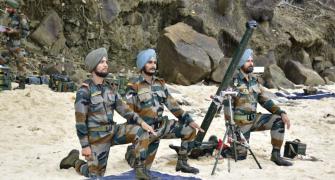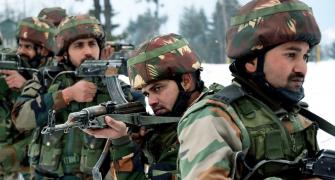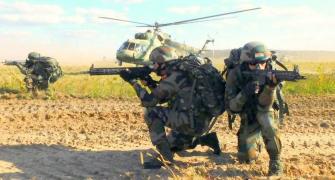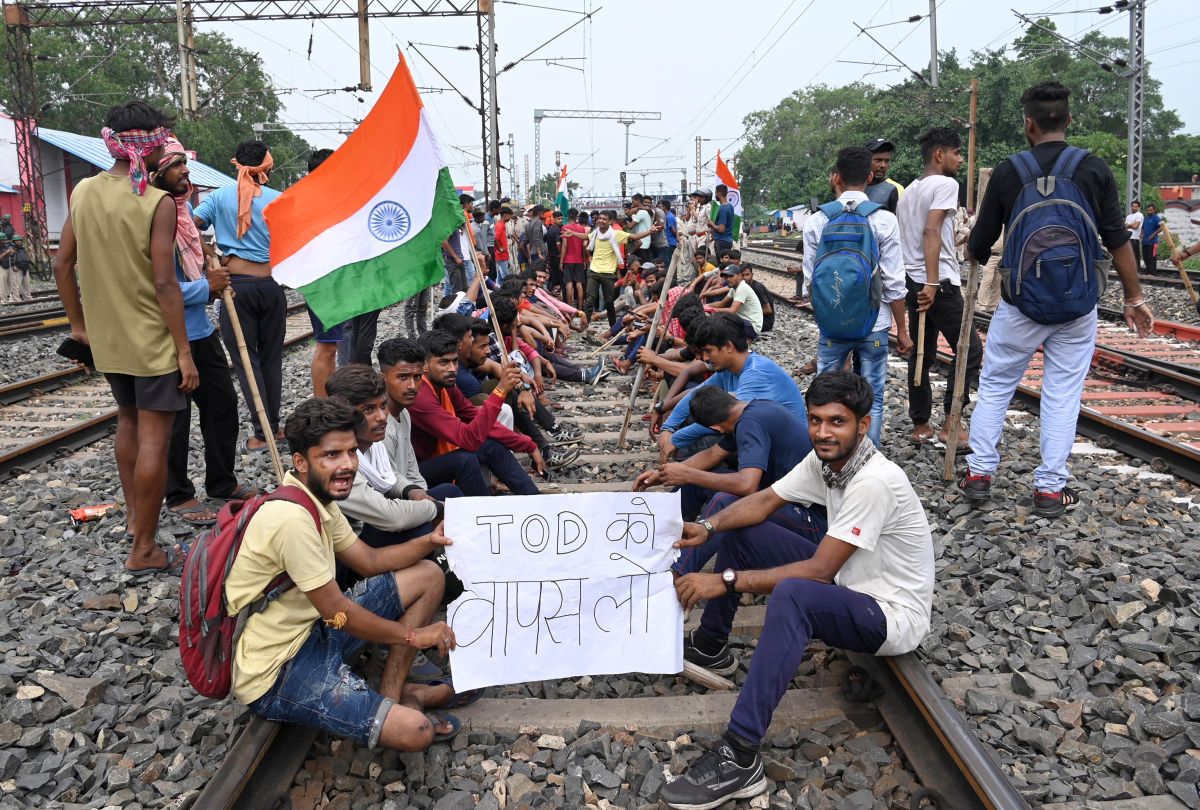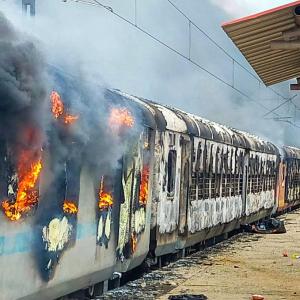'It seems unlikely that a recruit will make a useful contribution as member of a combat unit.'

Admiral Arun Prakash (retd) has emerged as one of the major critics of the Agnipath scheme.
"The fact that it was announced personally by the Raksha Mantri, and was preceded and accompanied by a high-pitched media blitz, indicates the possibility that the roots and objectives of the scheme lie more in the political than in the military domain," says Admiral Prakash, chief of the naval staff from July 2004 to October 2006.
"This could explain the haste with which it was launched and the failure to foresee mass public resentment it would arouse," the admiral tells Rediff.com Senior Contributor Rashme Sehgal in the first of a two-part exclusive interview.
The government says a great deal of care was taken to formulate the Agnipath scheme with a senior army officer providing details about how they held 254 meetings lasting 750 hours spread over two years involving bureaucrats from the defence ministry, three services and other government departments to flesh out its details.
And yet both those within the armed forces and retired personnel remain unconvinced about its efficacy.
What are your views?
A scheme of this nature -- if meant only to right-size or enhance combat efficiency of the armed forces -- could have been prepared and launched, after obtaining government approval, on their own, by the Integrated Defence Staff HQ or the personnel branches of the respective Services.
The fact that it was announced personally by the Raksha Mantri, and was preceded and accompanied by a high-pitched media blitz, indicates the possibility that the roots and objectives of the scheme lie more in the political than in the military domain.
This could explain the haste with which it was launched and the failure to foresee mass public resentment it would arouse.
Meetings and discussions are significant, only if dissenting views or contrary advice are given due weightage.
A major complaint is how it will affect the operational capability of the army as no operationally committed unit can sustain a high wastage rate of 75 per cent.
Army officers maintain that no one in a regiment will be willing to entrust Agniveers with handling sensitive material such as ammunition and ordinance in infantry, armoured corps and artillery regiments, etc and they will end up being made to perform the more ceremonial tasks.
Is that true for the navy also?
A four-year engagement appears quite inadequate for all but the most basic duties that a sailor is expected to perform in a naval unit, be it ship, submarine or air squadron.
Currently, before he is entrusted with any kind of responsibility for handling, operation or maintenance of equipment, the sailor has to undergo classroom instruction, followed by practical (on-job) training, which could take anything from 12-18 months.
One cannot envisage that a four-year engagement, which includes 24-30 weeks of basic-training, plus unit-orientation, annual-leave, and time for pre-demobilization processing, etc can equip a recruit to handle lethal weapon systems or complex electrical, mechanical or electronic devices.
It, therefore, seems unlikely that he will make a useful contribution as member of a combat unit.
The one criticism across all three forces and which you too have voiced is that the training period is far too short to prepare a fully trained sailor who can man and maintain sophisticated lethal weapons/
The time period should have been six to seven years? Could you elaborate?
As pointed out, a four-year engagement seems inadequate for a recruit to be entrusted with anything but the most basic tasks in a combat unit.
Enhancing this engagement to six to seven years will certainly enhance his utility much more.

There is also the danger of exposing Agniveers to sensitive operational and intelligence data which could make its way into the public domain once they have been discharged. Your views?
Recruits and junior ranks are not entrusted with sensitive data, but they will certainly acquire skills of basic weapon handling.
The IAF has already launched this scheme on June 24 and has proudly announced it has received several thousand applications. But questions about their amalgamation remain out in the open.
For example, in the army, it has been pointed out that the issue of dual salaries is likely to cause resentment especially since Agniveers will be paid more than regular jawans and havaldars. Will this be true for the navy also?
Given the current levels of unemployment in the country, there will always be an enthusiastic response to any recruitment scheme.
The Services have to make their own assessment about the utility of such recruits, and whether their induction will enhance or dilute the combat effectiveness of units.
The 'Agniveer' has been created as a separate rank, and he will probably wear a distinctive badge or insignia.
There may also be differences in emoluments as well as terms and conditions of service compared to his long-service counterparts.
Such distinctions within a unit are likely to create man-management issues, which will need to be handled by commanding officers.

By the next decade, India is set to recruit over 160,000 Agniveers in the army. The IAF and the Indian Navy are expected to annually recruit some 3,000 Agniveers each every year (and more) depending on their requirements.
While the army was based on the practice of several established regiments with a distinct identity following the practice of naam, namak and nishan, all this is set to be obliterated with the induction of Agniveers/
How is this likely to translate for the Indian Navy?
There is no 'regimental system' in the Indian Navy and recruitment has always been on an 'all-India' basis.
However, as a growing service, already short of manpower, the Indian Navy neither needs, nor can afford any downsizing.
From being a professional navy, it is set to be transformed into a contractual navy. Will this create job insecurity amongst the ranks?
At any given time, only a small percentage of the navy can consist of 'contractual"' personnel.
This is because the service has to maintain a hierarchical structure of experienced non-commissioned ranks, consisting of Petty Officers, Chief Petty Officers and Master Chief Petty Officers.
These senior supervisory personnel form the 'core' of the navy, and ensure that new entrants receive suitable 'on-job' training and that their work is adequately supervised.
Depending on rank and branch, these sailors serve for periods of 15 to 35 years and retire at ages between 35-55 years.
In the years to come, since this 'core' will emerge from the Agniveer-entry, the number of new inductees will need to be enhanced.
Feature Presentation: Aslam Hunani/Rediff.com

